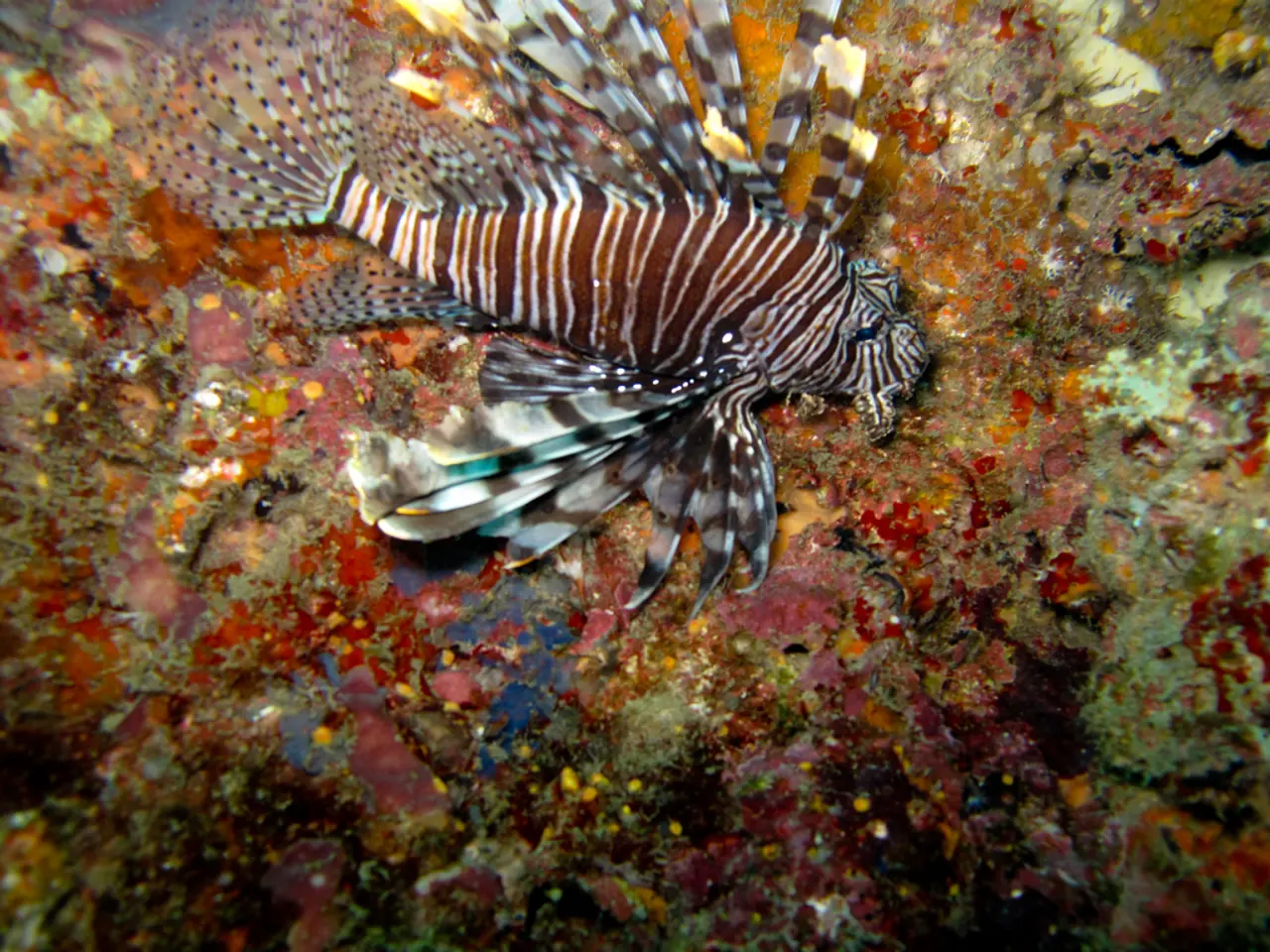Land-Dwelling Fish Residence Constructors: MudskippersGuard Homes on Terrafirm
============================================================
In the vibrant coastal regions of Africa, Asia, and Australia, a fascinating creature thrives - the mudskipper. This amphibious creature offers valuable insights into evolution, adaptation, and the transition from water to land.
Mudskippers are masters of habitat engineering, constructing elaborate burrows using their mouths and fins. These burrows serve multiple purposes, providing protection against predators, a refuge from extreme temperatures, and storage of air during low tide. Each mudskipper species is adapted to its own niche, creating a patchwork of tiny, bustling communities along the water's edge.
These creatures are renowned for their unique adaptations that enable them to survive both on land and in water. Breathing adaptations allow mudskippers to breathe through their skin and the lining of their mouth and throat, an adaptation that keeps their skin moist to absorb oxygen from air, allowing them to breathe on land as well as in water. They can also use their gills underwater.
Locomotion is another area where mudskippers excel. They use their strong, muscular pectoral fins like limbs to "walk" or crawl on muddy land and mudflats, enabling them to move effectively between aquatic and terrestrial environments.
Mudskippers are also skilled hunters on the mud. Using their protruding, frog-like eyes, they spot movement on the mud's surface and their strong jaws to snap up prey. They forage efficiently on exposed mudflats, consuming a variety of food such as phytoplankton, nematodes, crustaceans, and other small organisms.
Mudskippers are fiercely territorial, with males jealously guarding their burrows and engaging in dramatic displays to warn off rivals. The males perform elaborate displays to attract females, which include leaping, flashing fins, and showing off burrows.
However, these fascinating creatures face threats from birds, crabs, larger fish, and human activity. Conservation efforts focused on mangroves and tidal flats can ensure the survival of mudskippers for future generations.
The mudskipper serves as a symbol of nature's resilience and ingenuity, reminding us of the endless possibilities that exist when life dares to push beyond its boundaries. With their ability to adapt quickly to the rising and falling of the tide, the mudskipper continues to thrive in intertidal environments such as mangrove swamps and mudflats, exploiting both aquatic and terrestrial niches.
- The role of mudskippers in various ecosystems highlights significant insights about evolution, adaptation, and the transition from water to land; these observations can provide valuable lessons for science, health-and-wellness, and lifestyle.
- While mudskippers exhibit remarkable resilience towards environmental changes, they still face threats from various predators and human activity; thus, it is crucial to prioritize conservation efforts, specifically in mangroves and tidal flats as seen in environmental science and fitness-and-exercise routines advocating for eco-friendly practices.
- Mudskippers' energy-efficient adaptations, such as breathing through their skin and mouth lining, not only allow them to survive on land but could also inspire advancements in energy conservation for human societies.
- Working in tandem with their intricate habitat engineering skills, mudskippers, by creating bustling communities along the water's edge, indirectly contribute to ecosystem health and well-being by providing food for various organisms, including insects and crustaceans.
- Beyond their evolutionary importance, mudskippers can inspire us to embrace diversity, adaptability, and versatility in embracing different lifestyles with ingenuity, mirroring their innovative strategies in thriving across aquatic and terrestrial environments.






